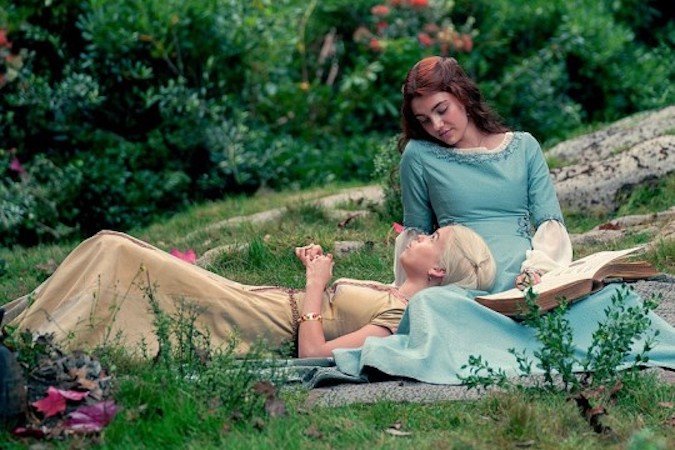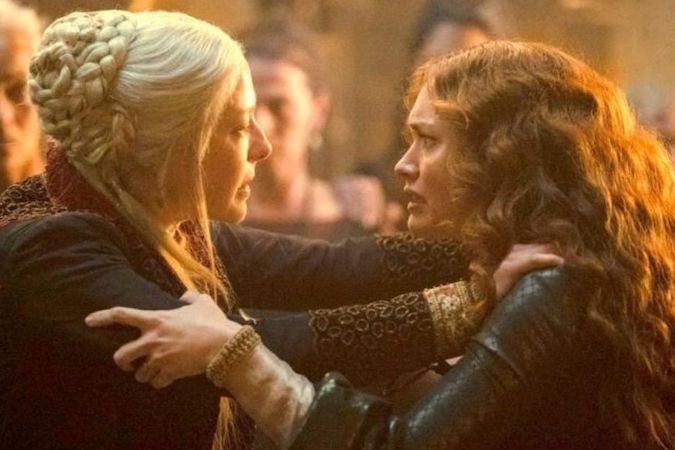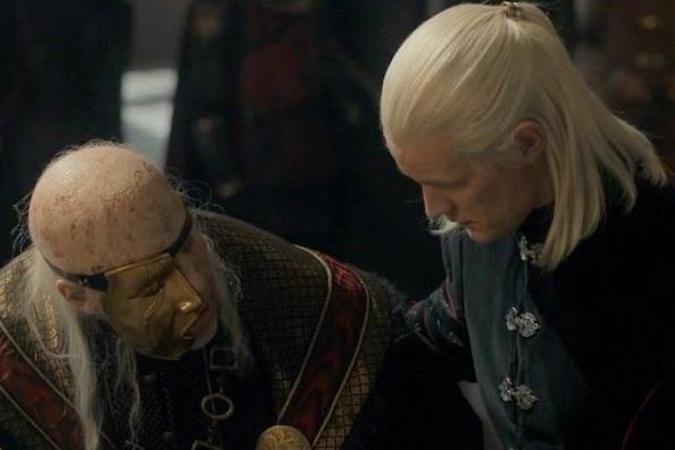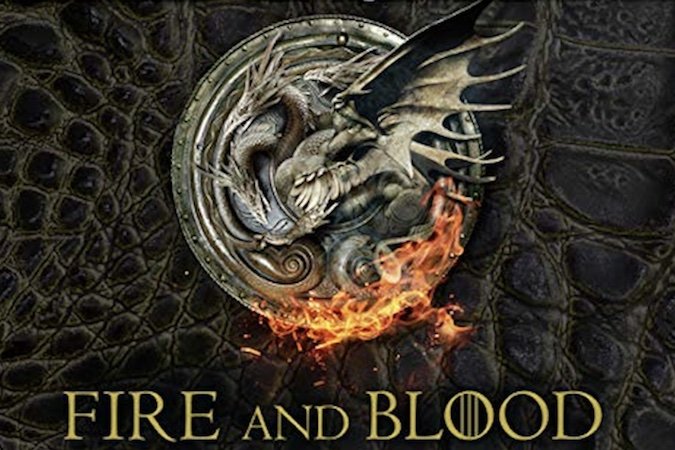
House of the Dragon is based on history: It’s adapted from George R.R. Martin’s novel Fire and Blood, a prequel to A Song of Ice and Fire, which inspired Game of Thrones. And unlike A Song of Ice and Fire, Fire and Blood has an unreliable narrator. The title page includes the caveat that Martin is simply transcribing this text by Archmaester Gyldayn of the Citadel of Oldtown, which, if you remember from Game of Thrones, is the scholarly headquarters of the Seven Kingdoms.
A portion of the book is predicated on gossip — meaning that the House of the Dragon showrunners really can’t go wrong with any changes they make being considered non-canon. They’ve used that freedom to fill in or change certain details, and House of the Dragon is often better for it. Here are the most prominent differences between how House of the Dragon is portrayed on television versus in Fire and Blood.
Ages

Young Rhaenyra (Milly Alcock) and Alicent (Emily Carey) on House of the Dragon.
Just as in Game of Thrones, many of the younger characters in House of the Dragon were aged up for both legal and practical purposes. In the book, 18-year-old Alicent marries King Viserys when he’s in his late 20s, and his daughter Rhaenyra is eight or nine. In the show, Alicent and Rhaenyra are both about 15 (and best friends) when Alicent marries the king. Viserys looks to be in his 40s — he’s played by Paddy Considine, who is 49 and successfully plays much older as the series continues.
Appearances

The older Rhaenyra (Emma D’Arcy) and Alicent (Olivia Cooke) in House of the Dragon.
The showrunners also took the characters to the salon: in Fire and Blood, Viserys boasts cropped hair with a silver-gold mustache, but TV-Viserys maintains his stubble and long hair until his death – even when most of his hair has fallen out. Princess Rhaenys, who has voluptuous silver-blonde hair on the show, should actually have the black hair of her mother, Jocelyn Baratheon; but, prior to the publishing of Fire and Blood, Rhaenys was referred to in Martin’s texts as having silver hair. Perhaps the two conflicting canons cancel each other out?
House of the Dragon trimmed some figures, too. Rhaenyra, though beautiful in her youth, is said to have become stout after six pregnancies ruined her physique in Fire and Blood. In contrast, the book mentions that Alicent’s figure remained slender and graceful after her pregnancies. By Episode 8 of House of the Dragon, when Rhaenyra has two sons with Daemon and a sixth bun in the oven, she looks as trim as ever, aside from the pregnancy. Viserys, too, was supposed to be severely obese late in his reign, but the showrunners took him in the opposite direction: he is already thinning in Episodes 6 and 7, but by the time we see Viserys on his deathbed in Episode 8, he is so emaciated and frail that his ribs protrude from his skin.
Also Read: Yep, Joffrey Spoiled House of the Dragon on Game of Thrones
Finally, Martin repeatedly mentions throughout his books the famous purple eyes of Valyrians, a detail omitted by Game of Thrones as well as House of the Dragon.
Relationships

Aged Viserys (Paddy Considine) and Daemon (Matt Smith) in House of the Dragon, based on Fire and Blood by George R.R. Martin.
Tangential to the aging-up of Rhaenyra, who, in the book, is supposed to be about a decade younger than Alicent, there is no mention or implication of the existence of Rhaenyra and Alicent’s friendship in Fire and Blood, though their rivalry as adults remains consistent. Of all the book-to-series differences, this is perhaps the most universally appreciated by viewers, as the complicated development of their relationship — especially after their quasi-reconciliation at the end of episode 8 — has been one of the most fascinating tenets of the show and added depth and dimension.
Alicent’s role as partner to Viserys has also been simplified on screen. According to Fire and Blood, in which Alicent serves as aide to King Jaehaerys until his death, rumors circulated widely about Alicent’s virtue. These rumors suggested that she had lost her virginity to Daemon, was more than just an aide to Jaehaerys, and/or even that she slept with Viserys while his wife, Aemma, was still alive. In the show, none of this is mentioned or even implied. (Jaehaerys turns up only briefly in the show.) In Fire and Blood, Ser Vaemond Velaryon, whose fate came to a particularly satisfying end at the hands of Prince Daemon in the latest episode, was Lord Corlys’s nephew — not his younger brother. Vaemond and six other younger Velayron cousins are all entangled in a subplot in the book, but have seemingly been condensed into one character on the show.
Melodrama

The cover of the George R.R. Martin novel Fire and Blood, the inspiration for House of the Dragon.
A shocking number of dramatic moments didn’t quite play out in the show as they did in the books — if they happened in the books at all. For one, at the end of the series pilot, Viserys tells Rhaenyra about the dream of Aegon I, in which he foresaw “the end of the world of men” that will “begin with a terrible winter gusting out of the distant North.” Aegon’s dream, Viserys tells his daughter, is called “The Song of Ice and Fire.”
While this allusion to Game of Thrones is pretty cool, it wasn’t mentioned in Fire and Blood. “That was the detail that George actually gave us early in the story break — the idea that Aegon the Conqueror was himself a dreamer and that’s what motivated the conquest,” Ryan Condal, the show’s creator, told Insider. “Which he mentioned casually in conversation, as he often does with huge pieces of information like that.”
Also, in the book, Rhaenyra and Ser Criston Cole did not have sex. It’s mentioned in Fire and Blood that there are conflicting rumors about one friendzoning the other, but either way, they did not, in fact, sleep together. There is also zero indication in the book that Criston felt any guilt about murdering Laenor’s beau, nor did he attempt to commit suicide, as he does in the series. Remember that dramatic fight between Criston and Ser Harwin in Episode 6 after Criston suggests Harwin was the true father of Rhaenyra’s children? Yeah, that didn’t happen in the books, either.
If you enjoyed this story, can we also recommend our look at Four Crucial Changes From Game of Thrones to House of the Dragon?

